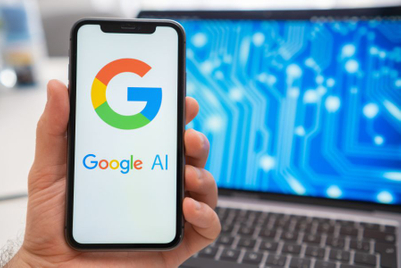
Search as we knew it—text-heavy, keyword-driven and linear—is no longer fit for purpose.
Earlier this week, Google AI Max for Search news confirmed that the future is multimodal, predictive, AI-native and signals a pivot for the company. But what made Google great at launch in 1997 was its simple interface that unlocked an entire internet of possibility. Now, that simplicity is its biggest challenge—how do you preserve ease of use, but make the experience exponentially better and trustworthy?
Since 1997, two main challenges have slowly but steadily chipped away at traditional search: Unreliable information and too much information.
AI is transforming many industries. In marketing, it’s delivering more relevant experiences for customers and deeper customer intelligence for brands. Enhanced Google Search activity and data reveals clearer paths to customer targeting and personalisation—driving revenue through smarter use of first-party data and creating a smoother journey from search to discovery to conversion. This is especially important given that while paid traffic now accounts for 39% of all web traffic, conversions from paid sources lag behind unpaid—1.83% vs. 2.66%, respectively. Without better experiences, more traffic just means more missed opportunities.
In theory, Google’s news also helps marketers tackle the issues of information overload and misinformation on the web related to their brands by using AI to promote brand-generated data and help marketers reach audiences with greater precision and success.
Here are a few of the things we can expect to see happen with improved search.
Minimised frustration
Frustration is the number one reason customers abandon a website. Recent data shows that nearly 40% of all online sessions exhibit signs of frustration—such as slow load times or broken elements—making it a persistent threat to conversion.
Imagine a customer goes to Google’s Shopping page, searches for a specific item and is directed to your brand’s page. The item that Google said you had in stock is then marked Out of Stock, is a higher price than expected or the checkout page inexplicably keeps reloading. That customer is as good as gone and probably won’t come back.
AI Max increases the pressure on brands to deliver accurate, real-time information—such as product availability, price and inventory. It can also better understand search terms—with its new search term-matching feature—and expand what it serves up without compromising relevance. What is certain is that AI Max is designed to raise customers expectations—and any friction on-site will matter more than before.
Marketers, take time to clean up your website so Google can draw the best, most accurate information from its core source. Focus on addressing the friction that exists on your website that Google doesn’t impact. Make the customer experience seamless and you’ll set yourself up for success.
‘Less is more’ will become a reality
Marketers love nothing more than to be able to develop and launch smart campaigns, with clear understanding of who they’re targeting, what they want from the brand and drive success with relevance and precision. We’ve seen how clean first-party CX data, paired with AI-enhanced search signals, enables marketers to skip guesswork and go straight to personalised execution.
We’re already seeing AI transform the marketing function by turning vast data into clear customer insights and opportunities; coupled with new AI Max for Search features, such as reporting improvementsandimproved asset reports, marketers can better understand how search data can help identify the ebbs and flows of customer interests. This goes beyond exposure and engagement, and helps marketers connect the dots on what’s working and what’s not.
Over time, this means marketers can streamline the customer experience, focus on what matters (based on historical data and success) and leave more time and resources to experiment within known customer preferences. Simply, marketers are better able to design campaigns that will work.
Marketers, update your KPIs to align with the strongest AI use cases in digital commerce. You’ll be surprised at how you’re able to make AI-enabled experiences more powerful if you work backwards, from goals to execution to campaign ideation.
Data drives customer loyalty
Happy customers are loyal customers. When you can streamline the journey by also improving the discovery process during search, customers get what they want faster. Leveraging clean, reliable search and first-party data together directly impacts top-of-the-funnel success, allowing brands to make data-based decisions throughout marketing campaigns and use engagement and performance data to capture impact and value. With AI, brands are now able to reach a level of sophisticated personalization more than ever.
With optimised search, marketers can better personalize experiences and tailor webpage journeys with dynamic content. By removing the micro-friction between channels and touchpoints, marketers are more clearly identifying the brand elements and products that make customers happiest.
Data is only good if it’s clean, trusted and integrated. Marketers—revisit your data strategies to ensure CX and profile data across all data lakes can come together for AI to analyse. Doing so highlights the biggest challenges and opportunities to keep customers satisfied and engaged.
Google’s announcement is exciting and, more importantly, is a clear response to the consumers embrace of AI. When brands leverage better search, they can also drive improved brand engagement, conversion and loyalty. Using data to tell a complete picture means customers and brands both win.
Jean-Christophe Pitié is the chief marketing and partnerships officer at Contentsquare.



.jpg&h=334&w=500&q=100&v=20250320&c=1)


.png&h=334&w=500&q=100&v=20250320&c=1)




.png&h=334&w=500&q=100&v=20250320&c=1)




.jpg&h=268&w=401&q=100&v=20250320&c=1)


.png&h=268&w=401&q=100&v=20250320&c=1)
